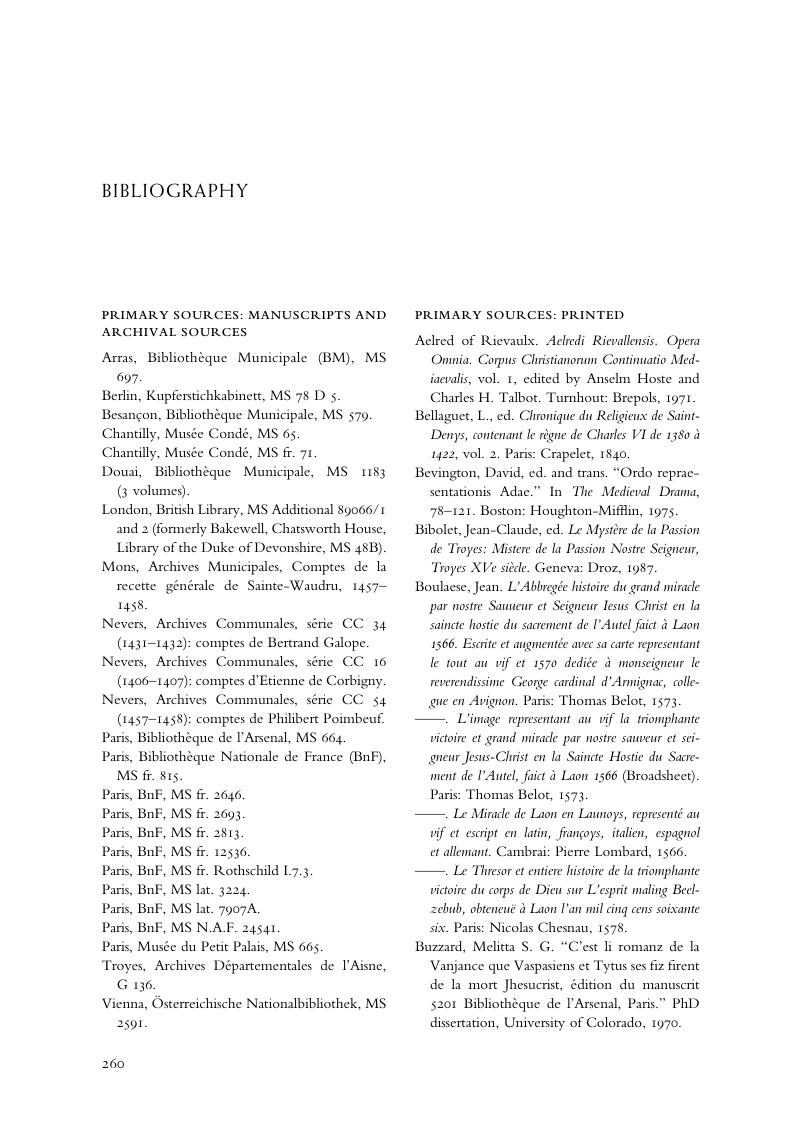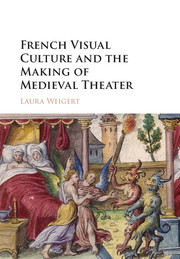Book contents
- French Visual Culture and the Making of Medieval Theater
- French Visual Culture and the Making of Medieval Theater
- Copyright page
- Dedication
- Contents
- List of Illustrations
- Book part
- Introduction
- Chapter One “Vocamus personagias”
- Chapter Two “Ouvrez vos yeux et regardez”
- Chapter Three “Faire semblant”
- Chapter Four “Cy s’ensuit le mystère”
- Chapter Five “C’était qu’un jeu industrieux”
- Conclusion
- Notes
- Bibliography
- Index
- References
Bibliography
Published online by Cambridge University Press: 18 December 2015
- French Visual Culture and the Making of Medieval Theater
- French Visual Culture and the Making of Medieval Theater
- Copyright page
- Dedication
- Contents
- List of Illustrations
- Book part
- Introduction
- Chapter One “Vocamus personagias”
- Chapter Two “Ouvrez vos yeux et regardez”
- Chapter Three “Faire semblant”
- Chapter Four “Cy s’ensuit le mystère”
- Chapter Five “C’était qu’un jeu industrieux”
- Conclusion
- Notes
- Bibliography
- Index
- References
Summary

- Type
- Chapter
- Information
- French Visual Culture and the Making of Medieval Theater , pp. 260 - 278Publisher: Cambridge University PressPrint publication year: 2015



